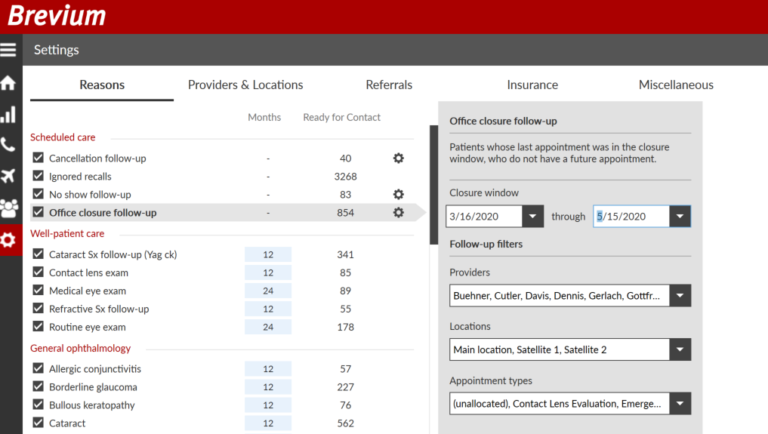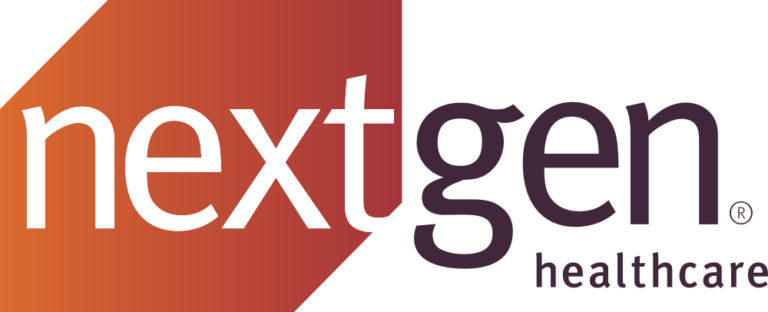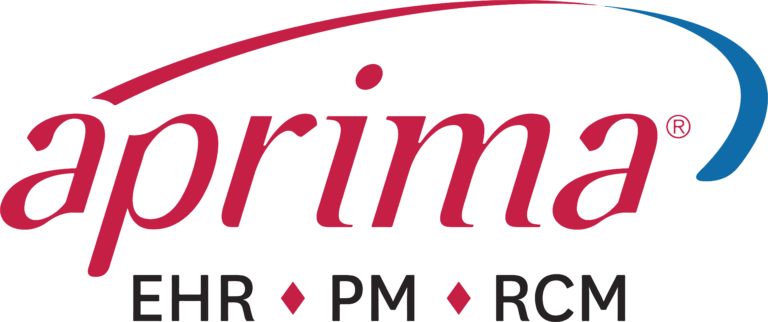The Brevium Blog

Winning Back Hearts and Appointments: Why Appointment Reminder Software is a Must
Patient no-shows, missed appointments and last-minute cancellations plague medical practices far and wide, regardless of specialty, location or expertise. Though experiencing the damaging effects of missed appointments seems to be a universal experience for healthcare professionals, many providers don’t truly realize the impact that even a few of these daily occurrences could have both on their reputations and bottom lines. While practice staff work hard to combat no-shows and reduce their frequency, those strategies often include manual processes that have little to no impact on lowering the no-show rate.
Thanks to technology advances over the past few decades, healthcare professionals now have solutions to combat this phenomenon: patient appointment reminder software. The benefits of switching over to an automated reminder system are tenfold, with most practices reporting increased attendance rates, reduced empty appointment slots and more importantly, improved patient satisfaction. With appointment reminder software doing the heavy lifting to reduce patient no-shows, your practices ultimately have more appointments on the schedule and more revenue flowing in. Continue reading to learn how the right automated reminder software can boost patient engagement and keep your schedules full.
Understanding the Cost of Missed Appointments
Any healthcare professional can attest to how detrimental missed appointments are for their organization. Not only do no-shows significantly impact provider revenue, missed appointments prevent patients from receiving needed care essential to their treatment journey.
Economic Impact
Missed appointments are not like cancelled appointments where providers have enough notice to backfill the schedule—no-shows equal lost revenue. Depending on the specialty, studies indicate patient no-shows and missed appointments cost practices an estimated $200 per missed appointment. For surgeons, that number is closer to $500. In an industry that amasses $3.5 trillion in the U.S. alone, the cost of these missed appointments amount to over $150 billion annually.
Patient Health & Wellness Impact
No-shows and missed appointments have a direct impact on patients’ health and wellness. When your patients fail to show for needed treatment, they stop their providers from delivering preventative services in a timely manner. This interruption in care could lead to short-term illnesses becoming chronic conditions with significant complications.
Athenahealth, a Brevium partner, studied the impact of no-shows on a patient’s treatment journey by observing a million patients over 2.5 years. The results were staggering: Patients who no-show or miss even one appointment are 70 percent more likely to not return within 18 months; further, older patients had the highest risk of not returning. Athenahealth also studied the impact of no-shows on patients with more severe conditions—such as cancer, asthma, diabetes, arthritis, and more—that put individuals at higher risk for complications. Despite patients with these illnesses needing close coordination between themselves and their doctors or specialists, the study shockingly found the attrition rate for high-risk patients nearly doubles with just one missed appointment.
The Role of Appointment Reminder Software
Reasons why patients miss their appointments vary, but often fall into these five categories: forgetfulness, time, cost, fear, and demographic barriers. However, the biggest culprit seems to be failed patient-provider communication, with studies showing that up to 31.5 percent of patients miss appointments because of lack of provider communication. This is where appointment reminders bridge the gap.
Simply put, appointment reminder software is a management tool to help practices improve patient engagement, create efficient workflows and reduce no-show rates by automating reminders for upcoming appointments. The resulting benefits are many:
· Reduces no-show rates: Missed appointments are often a result of patient forgetfulness and lack of provider communication. Appointment reminder software removes this issue for both providers and patients by adding patients to the appointment calendar and having a software sending automated reminders.
· Improves patient satisfaction and engagement: Most patients don’t intentionally skip appointments; in fact, most would rather avoid the waiting list altogether. Sending reminders for appointments shows patients you care about their treatment and want them to be there. As a result, patients will be more likely to invest in their healthcare.
· Maximizes staff time: Implementing automated reminder software frees your staff from doing mundane, tedious work. Instead, they can spend that time working on more pressing matters essential for practice operations.
· Ensures patient preparedness: Practices can send personalized messages using appointment reminder software that will help patients prepare for their appointments. Not only will they have needed instruction on how to prepare for their visit—such as updated insurance cards, valid identification, or specific care steps—but they will also be more likely to show up on time.
· Minimize revenue loss: Studies show that patient no-shows and missed appointments can cost practices up to 14 percent or more in revenue each year. With patient reminder software in your corner, these losses can be reduced by automating patient reminders and requiring them to confirm if they will be attending the appointment.
Choosing the Right Appointment Reminder Software
Appointment reminders have been around for a while now, albeit the process has changed over the years and not every software offers the same quality solutions. Choosing the best appointment reminder software for your practice will involve several factors, including organization size, staff stressors, scalability, and more. Most importantly, you’ll want an appointment reminder software that is intuitive to both your patients and your staff. If the software only creates a bigger clog your system, it may not be the one for you.
Though Brevium’s bread-and-butter is patient reactivation, the software offers unique solutions for appointment reminders that will not only help you reduce no-show and cancellation rates but ensure these patients don’t slip through the cracks and become lost or overdue. In other words, even if a handful of patients fail to attend their appointments and reschedule, Brevium is the safety net that ensures your no-shows or cancellations don’t turn into inactive patients. Here are a few key features to consider:
Variety of Contact Methods
Brevium uses proven, data-driven outreach methods to return your patients for treatment. Using a combination of texts, autocalls, emails, and occasionally postcards to remind patients of their upcoming visits, Brevium ensures maximum patient reachability by communicating through available channels. Not every patient has a SMS-compatible phone and sometimes, phone numbers are correctly entered into the management system (i.e. home phones numbers entered in the cell phone field). However, Brevium tests all contact methods before reaching out to ensure a contact is made. Using multiple contact methods increases the chance of your patients seeing the reminder and showing up to the appointment.
Automated Outreach
Your practice no longer needs to allocate valuable staff time to manually calling patients to remind them of upcoming appointments. Rather, Brevium’s software sends automated appointment reminders to your patients for you, removing the burden on your staff to perform manual outreach. With the system running in the background, you don’t even need to log in to Brevium for the software to send the reminders and keep your practice on track. This process also removes room for human error by ensuring patients receive appointment reminders in a timely manner through their preferred communication channels, reducing the odds of your patients no-showing or cancelling their appointments.
Customized Messaging
Brevium’s patient appointment reminder software gives practices the ability to customize the reminders sent to their patients, including personal details on appointment date and time, appointment type, clinic location, need-to-know information, and confirmation request. These customized messages enable patients to fully prepare for their appointments without having to guess or search for the answers themselves.
In-Depth Reporting and Analytics
Brevium takes the value of appointment reminder software to the next level with its data-driven reporting tools. These advanced tools provide valuable information for practices to see the success of their efforts, including data on the types of reminders sent, their effectiveness, patient engagement, and the status of each patient. These insights help practices understand the patient behavior behind the data, ultimately leading to informed adjustments and decisions.
Overcoming Challenges and Pitfalls
Introducing new software into the daily workflow often comes with issues that hinders integration and implementation. Here are the five most common challenges:
Cost of Product
There are many expenses associated with running a healthcare practice: salaries and benefits, office supplies, equipment, marketing/advertising, insurance, licenses, practice management system, and much more. Because of these expenses, many organizations balk at the idea of adding another expense—even if it’s one that would help them overcome major challenges and bring in more revenue. However, the return on investment easily compensates the cost of the product with more patients keeping their appointments and less staff time devoted to manual reminders.
Getting Team Invested
Though health information technology is the new frontier for increasing patient engagement and creating efficient workflows, many practices find that not all staff members are on board with the switch. Push-back from staff or patients may happen for a variety of reasons: product cost, change in established workflow, misunderstanding the technology, lack of awareness around benefits of implementation, and more. Yet, most providers and staff come around to the idea of reminder software when they understand the extensive benefits associated with an automated system that not only reduces no-show and cancellation rates but does so with staff dedicating less time in the process.
Workflow Interruption
The main reason for implementing an automated reminder software is to minimize tedious work for your staff by streamlining the reminder process. However, depending on the software you choose and how it’s customized, implementation might hinder your efforts. Luckily, avoiding this problem is simple. When shopping for appointment reminder software vendors, make sure your chosen company demonstrates exactly how the technology will integrate with your current practice software and work within the practice’s unique workflow. As for Brevium, the software runs in the background and doesn’t change anything about the staff’s daily responsibilities; in fact, Brevium runs without anyone even having to log in to the system. This feature helps to automate the tedious tasks that staff can spend hours doing each day.
Training
A major point of concern for many practices is the amount of extra time, energy and money that will be required to learn the new software. Especially with smaller practices, pressure to learn a new software while keeping up on daily tasks can seem daunting and isn’t a luxury some practices can afford. For this reason, it’s important to inquire about the amount of training required to implement the software before committing to a software to see if your staff has the capacity to handle additional work. Plus, some vendors like Brevium offer free software installs with staff trainings that are not only free but unlimited. Training on new software is an essential step to enabling your staff to use the system in its greatest capacity, leading to enhanced patient care and boosted practice revenue.
Lack of Communication
Communication between vendor and healthcare provider doesn’t end after the initial installation. Many practices run into issues when they implement a new software and don’t receive proper guidance on how to better use the software to meet their goals. Software implementation isn’t a one-off but a continuous process that helps practices adapt and evolve to meet expectations. With proper communication, vendors should help practices build rules and implement tools that address provider concerns and feedback. With Brevium, practices meet with their assigned account manager for quarterly and annual reviews to evaluate results and optimize the software’s performance, ensuring practice needs and expectations are being met.
Implementation and Best Practices
Software implementation roadblocks often prevent healthcare organizations from pursuing reminder software, regardless of how vital it may be for enhancing practice operations. While these concerns are valid, there are different strategies that can help practices tackle these challenges while implementing the software into business operations.
· Involve all interested parties.
During the process of rolling out a new appointment reminder software, you must include all stakeholders—including providers, administrators, staff, and vendors—in the process. These are the individuals who will be working closely with the software, and everyone must be on board before moving forward.
· Develop an implementation roadmap.
Your plan should have many layers, including general costs, implementation timeline, patient outreach strategy, scheduled training, and more. This roadmap should also outline the tasks that need to be completed before, during and after implementation and by whom. With a comprehensive plan in place, your practice can move forward with goals in mind and hopefully, make the reminder software integration and implementation a seamless transition.
· Provide training opportunities.
With your time and money at stake, it’s important to provide training opportunities to any user who might use the software. This training should include showing staff how to operate the software, how to access various reports and patient information, how to input information, and the expectations for staff versus software responsibility. Ensuring your staff is trained and well-equipped to handle the additional software only sets your organization up for success.
· Track and evaluate progress.
One of the most essential aspects of implementing an appointment reminder software into your daily workflow is consistent monitoring and evaluation of your progress. Data analysis enables you to assess the success of current strategies and identify areas for improvement—all without you having to lift a finger. With this insight, you’ll be able to make informed decisions on how to optimize your settings to achieve better results. There’s always room for improvement and growth, and consistent monitoring and adjusting will ensure you’re meeting the needs of your patient while taking your practice to new levels.
Conclusion: The Brevium Edge
Patient appointment reminder software plays an increasingly important role in today’s modern healthcare industry. As technology continues to advance, manual reminder processes and paper trails are falling to the wayside in favor of automated reminder software that not only eases organizational stress but keeps patients compliant with their treatment. There are multiple vendors that boast prowess when it comes to having the best appointment reminder software; however, Brevium stands out among the rest with not only its reminder features, but the software specializes in other facets of patient engagement that provides its customers a consolidated, comprehensive package. Brevium’s reminder and recall capabilities coupled with its patented patient reactivation data mining features makes the software the only one of its kind. With its state-of-the-art patient engagement software that only continues to evolve, Brevium will help your practice exceed expectations by reducing no-shows and cancellations, keeping schedules full of loyal customers and enhancing the overall patient experience.














